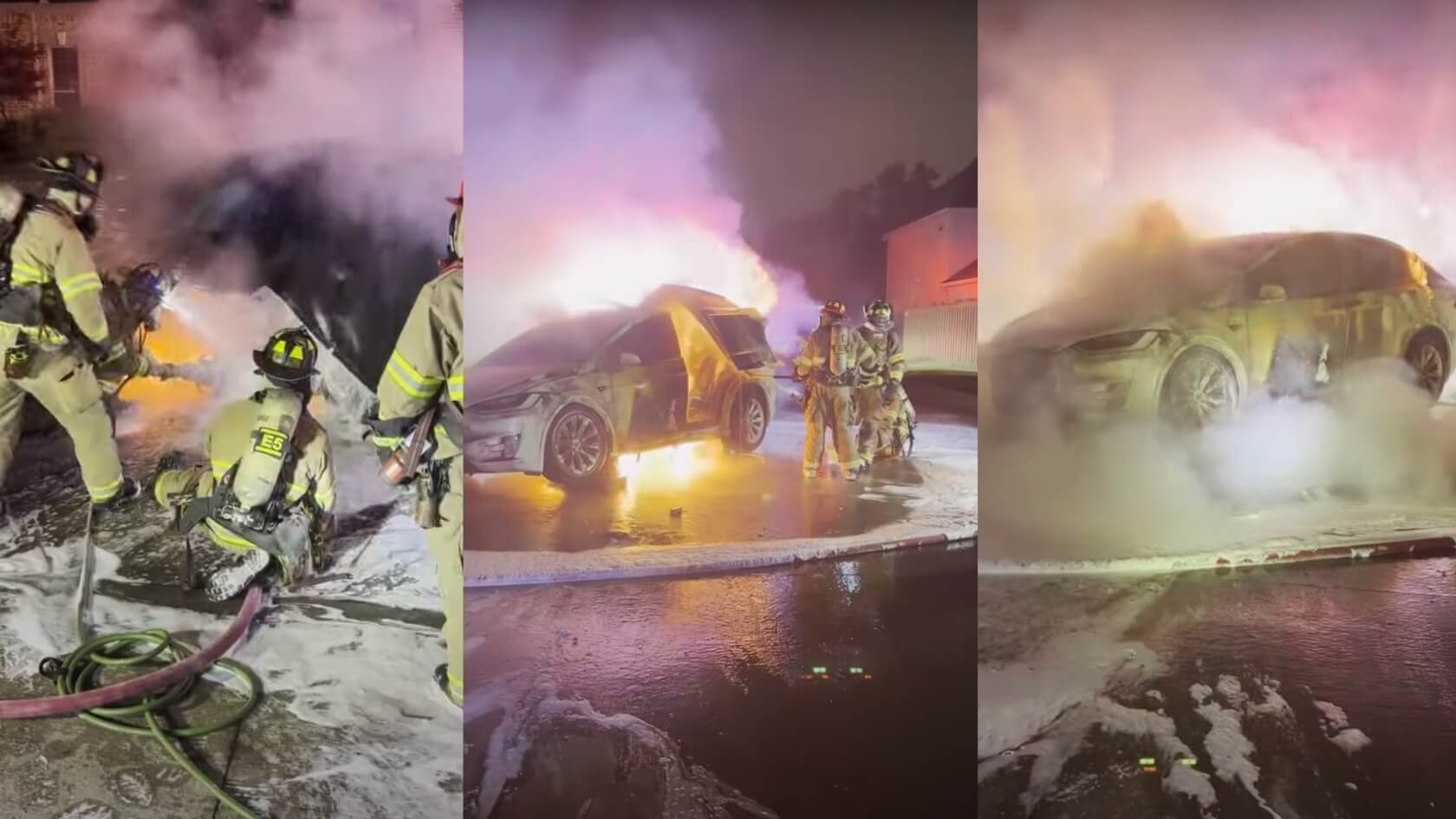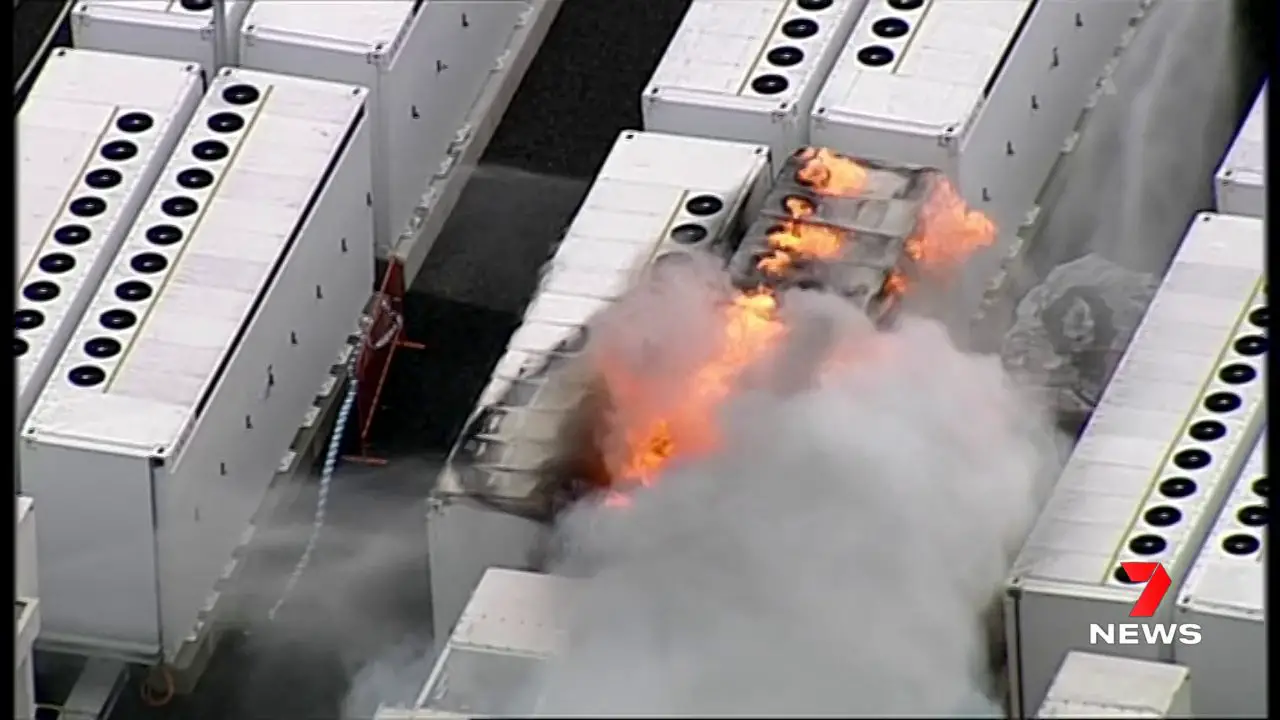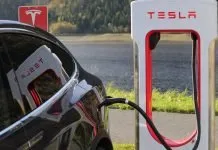In a recent alarming incident in Plano, Texas, a Tesla Model X caught fire, raising significant concerns about the safety of electric vehicles. The fire broke out in the garage of the vehicle’s owner and was traced back to a newly installed lithium battery. This incident adds to the growing list of concerns regarding the safety of lithium batteries in EVs.
The intensity of the fire and the efforts required to extinguish it have sparked a broader discussion about the implications and safety measures needed for the burgeoning electric vehicle industry.

Table of Contents
Tesla Fire in Texas: Details of the Incident
The Tesla fire in Plano, Texas, was a significant event that required extensive firefighting efforts. Tesla Model X in the owner’s garage, became engulfed in flames due to an issue with its newly installed lithium battery. Firefighters were challenged with a stubborn blaze that demanded a substantial amount of resources, including 600 liters of water per minute, to be fully extinguished. Despite the severity of the fire, it is noteworthy that there were no injuries reported.
The house incurred only minor smoke-related damages, demonstrating the effectiveness of the firefighting response and the resilience of modern residential structures against such incidents.
The incident in Plano, Texas, underscores a growing concern in the electric vehicle industry: the risks associated with lithium batteries. Similar incidents have been reported globally, including spontaneous fires in electric vehicles damaged by natural disasters like hurricanes and floods. These fires are notoriously difficult to extinguish due to the nature of lithium batteries.
Lithium battery fires can burn at extremely high temperatures and may require extensive resources to control. On average, it takes about 600 liters of water per minute and potentially up to 24 hours to completely extinguish such a fire. This intense requirement for firefighting resources highlights the unique challenges posed by electric vehicle fires, prompting a need for specialized response strategies and safety measures in the design and use of these vehicles.
Electric Vehicle Fires: Broader Industry Implications
The rising number of electric vehicle fires, including the recent incident in Texas, is a growing concern within the automotive industry. These incidents have a dual impact: they not only challenge public perception of electric vehicle safety but also prompt industry leaders to reevaluate safety standards and response protocols.
Florida State official Jimmy Patronis has expressed concerns about spontaneous fires in electric vehicles, particularly in the context of natural disasters like Hurricane Ian. Similar situations have been reported in Italy, where electric cars caught fire following severe flooding. These incidents collectively suggest a need for a more cautious and informed approach towards the adoption and management of electric vehicles, emphasizing the importance of safety in their design and emergency response planning.

Electric Vehicle Safety Concerns
The European Union’s ambitious goal to transition fully to electric vehicles by 2035 underscores a significant shift in transportation policy towards greener solutions. However, the recent incidents of electric vehicle fires have led to mixed reactions within the automotive industry. Major automakers like Volkswagen have reconsidered their strategies regarding electric vehicle production.
Similarly, industry leaders such as Akio Toyoda, former CEO of Toyota, have expressed skepticism about the rapid move towards electric vehicles, highlighting safety concerns. These reactions reflect the complex balance between environmental aspirations and the practical challenges of ensuring safety in the evolving landscape of electric transportation.
While concerns about electric vehicle safety have been raised by industry leaders and incidents like the Tesla fire in Texas, it’s crucial to contextualize these events. Despite the caution expressed by companies like Volkswagen and Toyota, it’s important to recognize that incidents involving EVs like Tesla are relatively rare, especially considering the large number of these vehicles on the road. Tesla being one of the best-selling EV brands has numerous cars operating without incident.
This suggests that while safety in EVs is a legitimate concern, the overall risk may be lower than perceived, indicating that electric vehicles are generally reliable and safe, with incidents being exceptions rather than the norm.
Conclusion
The recent Tesla fire in Texas has brought to light the risks associated with lithium batteries in EVs. While these incidents highlight the need for ongoing scrutiny and improvement in safety standards, it’s important to also acknowledge the overall safety record and benefits of EVs. These vehicles represent a significant step forward in reducing carbon emissions and promoting sustainable transportation. As the industry continues to grow, a reevaluation of safety protocols and battery technology is essential.
This will ensure that the transition to electric mobility is not only environmentally responsible but also maintains the highest safety standards for consumers.


















